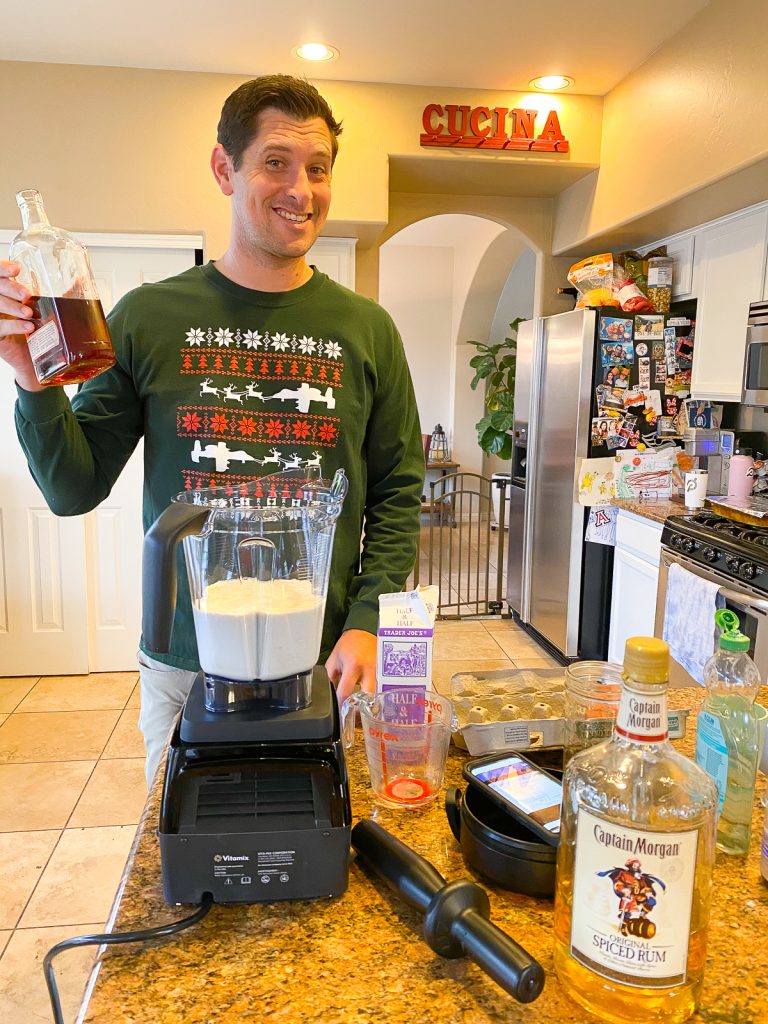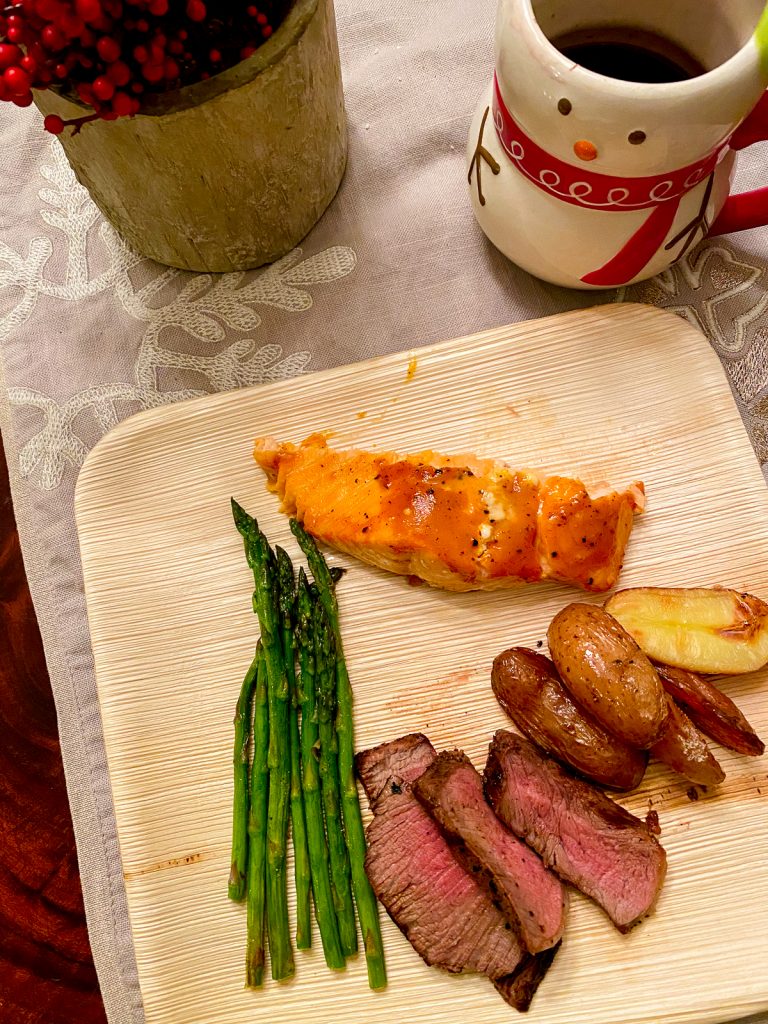Fitness Blog - Get in the best shape of your life with expert fitness tips, workouts, muscle-building guides, home training programs, and fat-burning routines. This blog helps you boost strength, build endurance, and sculpt your dream body with smart, science-based methods. Whether you're a beginner or advanced athlete, unlock natural fitness hacks, motivation tips, and the best ways to get results fast—at home or in the gym.
Fitness secret course
👉 Discover the fitness method top trainers secretly recommend!
Thursday, December 31, 2020
Hate traditional exercise? Try these new workouts. - Chattanooga Times Free Press
* This article was originally published here
Daily Simple Questions Thread - December 31, 2020
Welcome to the /r/Fitness Daily Simple Questions Thread - Our daily thread to ask about all things fitness. Post your questions here related to your diet and nutrition or your training routine and exercises. Anyone can post a question and the community as a whole is invited and encouraged to provide an answer.
As always, be sure to read the wiki first. Like, all of it. Rule #0 still applies in this thread.
Also, there's a handy search function to your right, and if you didn't know, you can also use Google to search r/Fitness by using the limiter "site:reddit.com/r/fitness" after your search topic.
Other good resources to check first are Exrx.net for exercise-related topics and Examine.com for nutrition and supplement science.
If you are posting a routine critique request, make sure you follow the guidelines for including enough detail.
(Please note: This is not a place for general small talk, chit-chat, jokes, memes, "Dear Diary" type comments, shitposting, or non-fitness questions. It is for fitness questions only, and only those that are serious.)
[link] [comments]
* This article was originally published here
Why Women Should Lift Weights
Some women do not want to lift any appreciable weight in their weight-training programs. In some circles, there is a belief that lifting weights will make them explode with bulging muscles. This is an unfortunate fallacy. Muscles are nothing to be afraid of – and there are many valid, physical reasons why women should embrace developing muscle for improved health.
Women who fear resembling the Hulk should put that anxiety to rest. It just won’t happen – for a simple reason – hormones. Women are from the planet Estrogen; men are from Testosterone. Both genders produce both hormones, but the relative ratios are significantly different. Men normally produce higher levels of testosterone (approximately 10 times that of women) and lower levels of estrogen. Women produce the opposite.
The huge professional female bodybuilders you may have seen online gained their extreme muscle mass with the aid of supplemental anabolic-androgenic steroids. However, use of steroids carries legal ramifications as well as potential physical and physiological side effects.
Although both testosterone and estrogen are anabolic (promoting the process whereby smaller units build bigger units in the body), testosterone is primarily responsible for increases in muscle tissue growth. Sure, some women have higher levels of testosterone than normal and therefore may tend to increase muscle mass beyond the average woman. This is genetically determined, and many of these women are competitive athletes. But, most women will not naturally develop enormous muscles. And, a woman does not have to be an athlete to increase muscle mass and enjoy the benefits.
Any woman can increase strength and gain muscle. A sensible program of combining resistance exercise and cardio will increase strength and stamina. Resistance training will stimulate the muscles to remain strong and robust, and will help with weight management. Let’s talk about why women should partake in resistance training.
Life and weight loss:
In our society, too many women are obsessed with weight control. Unfortunately, that obsession normally centers on the bathroom scale and does not consider changes in body composition (ratio of body fat to lean body mass). Most fad diets result in a loss of muscle tissue as well as body fat. You can lose half your fat and remain alive; but if you lose half of your muscle mass, you may die. Since muscle is denser than body fat, a person who is weight training may show slower changes on the scale, but faster changes in body composition.
Muscles burn fuel:
Muscle burns more calories than body fat. Muscle cells have organelles called mitochondria, often referred to by physiologists as the cells’ “power plants.” They provide the energy for nearly all the metabolic processes that take place within the cell. Muscle cells are very busy and the mitochondria constantly transform chemical energy into mechanical energy. Reactions within the mitochondria break the bonds of fuel molecules and release energy for cells to use. During endurance exercise, most of the energy for muscle activity is provided by mitochondria. This is used as the primary argument for the performance of excessive endurance exercise. While it is true that calories are burned during endurance exercise, only resistance training can increase muscle mass. More muscle = more mitochondria = more fuel burned.
Weight training can increase basal metabolic rate:
Basal metabolic rate refers to the number of calories used by the body at rest, and makes up 60 to 75 percent of the body’s total energy expenditure. While aerobic exercise burns calories during activity (and a small amount afterwards), it has minimal effect on basal metabolic rate. Furthermore, extensive periods of aerobic activity can decrease basal metabolic rate by causing muscle loss. In contrast, a proper resistance training program can increase muscle mass and the metabolic rate. For general overall health and weight control, weight training is a necessary component of a woman’s exercise program.
Muscle inactivity leads to muscle weakness and wasting:
Muscle must be physically active if it is to remain in good health. Otherwise, it will degenerate and lose mass. Because older individuals are less active, their muscles shrink and they become weak, often unable to walk without aid. Less muscle mass also means the body burns less fuel. Most importantly, less muscle mass means a decline in strength. Consequently, sedentary people have an increased need to incorporate exercise into their weekly activities to maintain muscle mass, strength and aid in weight control.
Connective tissue and joints:
Resistance training stresses and strengthens connective tissue. This is the tissue that binds bones together and attaches muscles to the skeleton. Sensible training with weights will increase the cell activity of connective tissue in the muscle and that attaching the muscles to the bones. Mechanical compression of the joints stimulates healthy metabolism of cartilage within the joints. Inactive joints have decreased macromolecule turnover in the tissue and may be more susceptible to osteoarthritis and injury.
Helps prevent osteoporosis:
Muscle wasting in the elderly contributes greatly to osteoporosis, a major debilitating disease in women after they reach menopause. Women have less muscle mass than men, and also have less bone density. Both men and women undergo hormonal and metabolic changes as they age. Muscles start to deteriorate, fat accumulates more readily, and bones begin to lose their density. This process can be slowed, especially with forethought. Load-bearing activities enhance bone mass. Studies have shown that women who are active throughout their lives have greater bone density and retard bone loss in later years. Research has demonstrated that weight training can reduce, and possibly reverse, bone loss in pre- and postmenopausal women. However, women should start and maintain some type of weight training activity as early as their 20s for optimum prevention of osteoporosis. Regardless, it’s never too late to start, no matter what age.
Resistance Training vs. Toning
We have used the two terms “weight training” and “resistance training” interchangeably. In the context of this article, resistance training is more applicable: building muscle mass by increasing the resistance the muscle must move. Exercise physiologists call this “progressive overload.” Muscles are amazing pieces of metabolic machinery. They adapt quickly to the stresses (additional weight) you place on them. When you follow a structured program of progressive overload and feed your muscles with clean food, stay properly hydrated and give your muscles adequate time to rest and recover, they will grow.
Use the word “toning” in a gym and watch the hardcore weightlifters cringe and sneer. Toning is not resistance training. Nor will it build muscle mass. The term toning is erroneously applied to doing countless reps with small amounts of weight that don’t incrementally challenge the muscle. That muscle adapts quickly to moving a weight for a given number of reps and is no longer stimulated. The weight must be progressively increased in small increments for muscles to grow.
Challenge Yourself
Use as much weight as you can and move that weight with intensity. Challenge yourself. Set goals and work hard to achieve them. When you can curl that 10-pound dumbbell for 12 reps, grab the next heavier dumbbell and do it again. Go for that extra rep. Embrace the feeling of contracting muscle. Push yourself and rejoice in your accomplishments.
The post Why Women Should Lift Weights first appeared on FitnessRX for Women.
* This article was originally published here
Wednesday, December 30, 2020
Daily Simple Questions Thread - December 30, 2020
Welcome to the /r/Fitness Daily Simple Questions Thread - Our daily thread to ask about all things fitness. Post your questions here related to your diet and nutrition or your training routine and exercises. Anyone can post a question and the community as a whole is invited and encouraged to provide an answer.
As always, be sure to read the wiki first. Like, all of it. Rule #0 still applies in this thread.
Also, there's a handy search function to your right, and if you didn't know, you can also use Google to search r/Fitness by using the limiter "site:reddit.com/r/fitness" after your search topic.
Other good resources to check first are Exrx.net for exercise-related topics and Examine.com for nutrition and supplement science.
If you are posting a routine critique request, make sure you follow the guidelines for including enough detail.
(Please note: This is not a place for general small talk, chit-chat, jokes, memes, "Dear Diary" type comments, shitposting, or non-fitness questions. It is for fitness questions only, and only those that are serious.)
[link] [comments]
* This article was originally published here
Tuesday, December 29, 2020
Bench Press for long limbed lifters - Breathing into your chest rather than belly (Elitefts)
I posted on here a couple of months ago that I struggle with my bench due to having very long arms, and I was wondering about the merits of breathing into the chest to shorten the range of motion, compared to breathing into the belly like you would in a Squat or Deadlift. I was essentially told back then that it was a bad idea.
Elitefts have recently made a video on YouTube specifically addressing bench press for long limbed lifters, saying that breathing into the chest is a good idea.
With this in mind, what are your opinions of this now that a well known powerlifting brand has advocated it?
The video:
[link] [comments]
* This article was originally published here
Want a Tight and Toned Butt?
So many women are not satisfied with the firmness or shape of their gluteal muscles, so if this describes you, be assured, you are not alone. The gluteals are large muscles that provide shape and structure to the buttocks, so improvements in muscle tone and shape cannot occur without calling the gluteal muscles into at least moderately intensive activity. One-legged movements that activate the major muscles of the hip are therefore a prerequisite for laying claim to gorgeous gluteals. One-legged squats are very intensive and will activate the gluteal muscles of the working leg, but this can be too intensive if you have not developed a base for your hip musculature. Thus, if you have not already invested in some serious hip training, it would be better to embark on several months of climbing stairs, machine leg presses and lunges with dumbbells for added resistance, before you progress to the more intensive single-leg squats described here. If you have a base of strength already, you may wish to consider adding this rather intense exercise to your training program. But, there are still some cautions for you to consider before beginning the exercise, and they will be discussed.
The Gluteal Muscles
The buttock or gluteal prominence is located on either side of, and on the posterior portion of, the hip bones. The gluteus maximus is the major hip extensor and it’s the thickest muscle of all the hip muscles. It contains the strongest and largest muscle fibers in the body. The fibers of the gluteus maximus attach to the bones of the hip, the sacrum, and along the lumbar area of the hip and lower back structures. This muscle finally attaches posteriorly to the femur bone of the thigh at a section referred to as the gluteal line or gluteal tuberosity. It also has an attachment on the iliotibial band of the facia lata, which is mostly a tough band of connective tissue running from the hip down the lateral side of the thigh to the knee. The gluteus maximus appears to be well anchored here and as a result, it tends to be active when other muscles of the thigh are active.
This is the major extensor muscle of the hip joint. This means that when the thigh is fixed (e.g., your lower legs are firmly planted on the floor) and the hip joint is free to move, this muscle can extend the lower back. Because it attaches to the hip bones and crosses the hip joint, it can assist the extension functions of the lower back (e.g., erector spinae muscles). The gluteus maximus is active when movement between the pelvis and femur goes beyond 15 degrees of extension, so small depth squats or short strides on a stair climber do not get the job done.
The gluteus medius is a very important fan-shaped muscle that lays just deep to the gluteus maximus. Its fibers run between the ileum bone of the hip and the posterior part of the femur bone of the thigh. It abducts the femur at the hip joint by moving the femur laterally, away from the midline of the body. The gluteus medius has an important function in maintaining balance during walking. This is especially important as we age because weakness in this muscle increases the likelihood of falling accidents in elderly persons. It’s also important for sports requiring quick changes in body position without loss of balance (e.g., martial arts, rollerblading).
The third and smallest muscle in this group is the gluteus minimus. It attaches to the outer surface of the ileum bone of the hip just deep to the gluteus medius. It attaches to the posterior and middle surfaces of the femur bone of the thigh. Similar to the gluteus medius, this muscle acts to abduct the femur on the pelvis.
Single-Legged Squats
Exercises that activate large muscle groups are never easy and such is the case for one-legged squats. Therefore, you should be prepared to put out a good effort, and you should also not be surprised if you feel winded after a single set.
1. Position a bench lengthwise behind you. The bench should also sit behind a fixed vertical pole, or if available, the handles of a parallel dip station. You will hold onto the pole or bar with one or both hands to support your body and to keep from falling forward or backward. Parallel (dip) bars are ideal, because you can stabilize your upper body even further by holding onto the bars with both hands.
2. If you first exercise the right leg, you will flex your left knee (non-working leg) to about 90 degrees and place the top portion of your left foot on the bench. This position puts the hip joint of the non-working leg into extension (so the heel of the left leg is posterior to your buttocks). This leg position is to help maintain your balance and to make this a one-legged exercise.
3. Your toes on the working (right) leg should be angled slightly outward and not straight ahead. This angle produces a more direct line of pull of the patellar tendon across the patella (kneecap) than if the knees were placed together and it will slightly reduce the stress through the front of the hip joint.
4. Shift your body weight to your right leg and slowly lower your body by flexing your right knee. Keep your eyes and head looking straight ahead and try to keep your back straight during the descent of your body. Continue to lower your buttocks toward the floor until your knee is about 90 degrees or until your buttocks just touch the bench.
5. Rise upward by straightening your right knee, but don’t allow it to lock out. This will maintain tension in the thigh and gluteal muscles, and will also ready you for the next repetition downward. Do not let your eyes focus on the floor when you are going up or down, because this will decrease your stability and you may lose your balance.
6. After completing about 10 repetitions with your right leg, take a short break. Then reposition your right leg so it rests on the bench. Start your squats for the left leg.
7. If you begin to struggle on the way up, simply sit down on the bench, reposition your feet firmly on the floor and stand up. It’s not worth trying to struggle and lose your balance or strain muscles responsible for stabilizing your hip joints.
8. Add more repetitions as you improve your muscle strength and stamina. After accomplishing about two sets of 30 repetitions with each leg, you will be ready to add some additional resistance. However, it is much better to attach a weighted belt (e.g., 5 pounds of resistance) around your waist because this will distribute the added resistance evenly for your thighs and hips to push against. A poorer approach is to hold a dumbbell in one hand, because you will also increase the likelihood of having some torque (twisting) applied to the hip and spine while squatting and this increases the chances for injury.
More About the Muscles
The angle between the torso and the thighs helps determine the relative activation of the gluteal muscles. If, during the descent, your back is kept vertical and perpendicular to the floor, your quadriceps will assume a greater role and your gluteals will not work as hard. On the other hand, if the torso bends forward slightly (but never forward by more than 30 degrees), the gluteus maximus is more strongly activated. However, bending over more than this will place the lower back at increased risk for injury. The gluteus maximus muscle will be most active during the standing phase (from the lowest position back to the starting position). The gluteus medius and minimus muscles are particularly active during the upward part of the lift and prevent the thighs from crumpling out to the sides.
Other Considerations and Cautions
Although this is a great gluteal and thigh exercise, it is definitely not appropriate for everyone. One problem with the exercise is that it creates a significant amount of hip and knee stress, and this is magnified in some women, where there’s an acute angle between the hip bones and the femur bones of the thigh. Without substantial preparation of the supporting structures, the hip and knee joints can become sore and acutely injured. This will not be the experience of every woman, but the wider your hips are, the more likely you are to develop an injury.
You can help minimize this potential injury by using a rather wide stance during the squat. Nevertheless, if you’re not used to regular leg presses and squats, or stair climbing (not shallow stair stepping, but actually climbing several flights of stairs), you should avoid this exercise until you’ve established a good base of strength around your hip joint, and strengthened the muscles and tendons associated with the knee joint. The one-legged squat it is an exercise that perhaps could be done for two or three months if you are symptom free (other than routine and expected muscle discomfort). Then it would be good to discontinue the exercise for a month and substitute another exercise before returning to it. While this is a great exercise that will help firm and shape gorgeous gluteals, it has a high risk factor for potential injury, so be very cautious and very strict in your exercise form.
References:
Beck M, Sledge JB et al. (2000). The anatomy and function of the gluteus minimus muscle. J Bone Joint Surg Br 82, 358-363.
Holder-Powell HM and Rutherford OM (2000). Unilateral lower-limb musculoskeletal injury: its long-term effect on balance. Arch Phys Med Rehabil 81, 265-268.
Hostler D, Schwirian CI et al. (2001). Skeletal muscle adaptations in elastic resistance-trained young men and women. Eur J Appl Physiol 86, 112-118.
Isear JA, Jr, Erickson JC and Worrell TW (1997). EMG analysis of lower extremity muscle recruitment patterns during an unloaded squat. Med Sci Sports Exerc 29, 532-539.
Kvist J and Gillquist J (2001). Sagittal plane knee translation and electromyographic activity during closed and open kinetic chain exercises in anterior cruciate ligament-deficient patients and control subjects. Am J Sports Med 29, 72-82.
Rahmani A, Viale F et al. (2001). Force/velocity and power/velocity relationships in squat exercise. Eur J Appl Physiol 84, 227-232.
Toutoungi DE, Lu TW et al. (2000). Cruciate ligament forces in the human knee during rehabilitation exercises. Clin Biomech (Bristol, Avon) 15, 176-187.
The post Want a Tight and Toned Butt? first appeared on FitnessRX for Women.
* This article was originally published here
Monday, December 28, 2020
Christmas 2020 recap
Hi friends! Happy Monday and welcome to the blur between Christmas and New Years, where time doesn’t really matter. I personally love this week as a chance to regroup and clean after Christmas festivities – our house is a toy store explosion – and also plan for the upcoming year. While I’m not setting my hopes or productivity goals TOO high for 2021 (lesson learned from last year), I’m definitely taking time to assess and plan what I can.
I hope that my friends who were celebrating last week enjoyed a wonderful Christmas! Ours was more key than previous years, but still absolutely lovely. Instead of having the huge Christmas Eve dinner with my dad’s entire side of the family, it was much smaller.
My stepmom set up beautiful outdoor seating areas so we could be spaced out and the kiddos could play on their playground. The weather was perfection!! We ate Chinese takeout, desserts, opened gifts, chatted around the outdoor fireplace, and my dad set up a race track on his putting green so the boys could race remote controlled cars. It was pretty hilarious.
We headed back home and I prepped the egg casserole and cinnamon rolls for Christmas morning. The girls put out their treats for Santa and the Pilot and I drank wine and watched Christmas Vacation before calling it a night. (Because we were home so much more this year, we had all of the gifts wrapped and hidden so all we had to do was set everything out!! Usually we’re up until crazy hours of the mornings prepping and assembling, and this year was a pleasant surprise. I’m going to try and do this again for future years!)
A huge Christmas gift: the girls let us sleep until 8am. They were watching TV in the playroom and playing, SO excited to open their gifts, but didn’t wake us up. I can’t even handle their sweetness.
We listened to Christmas music while they opened their gifts, and then mom, nana, my stepdad, Trevor, Uncle E and our cousins were over just in time for breakfast: cinnamon rolls, egg casserole, tamales, picadillo, and ALL the sweet treats. I set out a tray of cookies and peppermint bark, and madre brought over cookies, coffee cake, and grammies (I’ve had a hundred this weekend).
My fave pics from the day:
Mrs. Claus and Christmas Carol
P the explorer,
the Pilot, making his famous eggnog,
and Livi with her favorite: Uncle Jesse.
The kids spent the afternoon playing with their toys and we sat around eating sweets and watching movies. I caught a quick ride on the Peloton and we made dinner: roasted lemon and garlic asparagus, steak (a mix of NY strip and filet mignon), BBQ salmon, roasted potatoes, and mulled wine in the slow cooker.
The rest of the weekend was spent taking down decorations (wah), cleaning up, and taking a break for some time at the pool since it was 75 degrees (and the pool is heated). I’m back in the swing of things today, but before I sign off to get Fit Guides sent, I wanted to share the winner of my favorite things giveaway!
Instagram comment #9: @ksfitzpatrick
I’ll be getting all of the goodies on the way this week and stay tuned for more giveaway fun 🙂
THANK YOU so much to those of you who entered and those of you who completed the annual survey. I’m so excited to plan 2021 content using your amazing requests and feedback. I’m working on a special challenge for January based on many of your survey responses, current struggles (and things I’ve experienced myself!), so I’ll have the details on how to join next Monday. If you want to make sure you get the info first, be sure to sign up for my newsletter here.
Have a wonderful day and I’ll see ya soon!
xo
Gina
The post Christmas 2020 recap appeared first on The Fitnessista.
* This article was originally published here
Sunday, December 27, 2020
Daily Simple Questions Thread - December 27, 2020
Welcome to the /r/Fitness Daily Simple Questions Thread - Our daily thread to ask about all things fitness. Post your questions here related to your diet and nutrition or your training routine and exercises. Anyone can post a question and the community as a whole is invited and encouraged to provide an answer.
As always, be sure to read the wiki first. Like, all of it. Rule #0 still applies in this thread.
Also, there's a handy search function to your right, and if you didn't know, you can also use Google to search r/Fitness by using the limiter "site:reddit.com/r/fitness" after your search topic.
Other good resources to check first are Exrx.net for exercise-related topics and Examine.com for nutrition and supplement science.
If you are posting a routine critique request, make sure you follow the guidelines for including enough detail.
(Please note: This is not a place for general small talk, chit-chat, jokes, memes, "Dear Diary" type comments, shitposting, or non-fitness questions. It is for fitness questions only, and only those that are serious.)
[link] [comments]
* This article was originally published here
Uneven lifts and can’t ohp bar
I can deadlift 275 but can barely even ohp the bar and it’s hurting my shoulders rn. Right now I’m working out in my home gym so I don’t have access to dumbbells. Any help on how to be able to do this without hurting myself?
[link] [comments]
* This article was originally published here
Jessie J reveals how she's rebuilding fitness after cancer surgery – and why 10-minute workouts are key - Women's Health
Jessie J reveals how she's rebuilding fitness after cancer surgery – and why 10-minute workouts are key Women's Health * This ar...
-
For some context: - 18(M) - Experience level: intermediate - I lift in the mornings ~5:30 is when the first lift is done - currently eating ...
-
It feels like everytime I eat excess calories, my body is like "oh I know what you want...Belly fat!" I do heavy low rep compound...
-
While I was drinking my morning coffee and grinding through some spreadsheets this morning at work, I was looking forward to my lifting sess...







